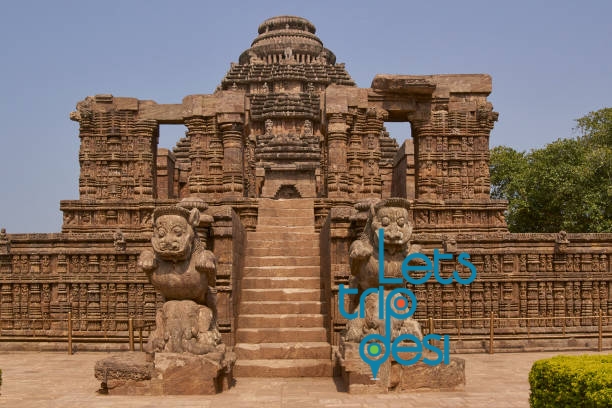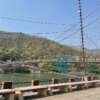Odisha is known for its pristine blue beaches, lush greenery, rich flora and fauna, and of course its ancient temples that have stood the test of time. The state, whose history dates back several millennia, is home to temples that are spectacular architectural wonders, housing dynasties of millennial traditions in their structures. While some are in near-perfect condition, others are picturesque ruins, however, here are 5 ancient temples in the Odisha that will make you swoon over their history.
Samaleswari Temple
Dedicated to the goddess Samaleswari, this temple is one of the most revered temples of Odisha. Although the origin of the goddess is a mystery, King Chouhan Balaram Dev prayed to the goddess Samaleswari and believed that the divine powers in his kingdom came from the goddess herself. Located on the banks of the Mahanadi River, Samaleswari Temple is known to be the epitome of rich cultural heritage. Devotees from all over India flock to the temple to celebrate festivals such as Nuakhai, Mahavisuba Sankranti, and Saradiya Durga Puja. Samaleswari Temple also kicked off a must-see sound and light show!
Mukteswara Temple
Mukteswar Temple, built in the 10th century AD, is dedicated to Lord Shiva, revered as Lord Mukteswara, or Lord of spiritual freedom. This temple is a miniature gem, where Mukteswar sculptures are adorned with intricately carved jewelry. The outer walls of the Mukteswar temple have carvings of hermits in meditative poses. The temple houses the Torana or arched gate, which is one of the most photographed architectural marvels in India. It will blow your mind.
The Sun Temple, Konark
The Sun Temple at Konark, a UNESCO World Heritage Site, is an ancient temple built in the 13th century. The 100-foot architectural marvel, carved from a single black Kondalite rock, is built in the shape of Lord Surya’s chariot. The wheel-shaped sundials carved into the temple accurately mark the time during the day and night. The seven horses that pull the cart represent the week, the wheels the months and the eight spokes of the wheels trace the cycle of the day. The Temple of the Sun is believed to have magnetic properties that caused a disturbance in the compasses of ships crossing the Konark coast during ancient times.
Jagannath Temple, Puri
A major pilgrimage site of Char Dham, Jagannath Temple, the deity of Puri is Lord Krishna. Each year, thousands of devotees flock to the temple as part of the Rath Yatra, an ancient annual festival that dates back more than 2,000 years. The 12th-century mansion has a flag at the top that flutters in the opposite direction to the wind. Temple priests climb the stairs every day to reach the temple, which is the height of a 45-story building. It is believed that if this ritual is missed for even one day, the temple will remain closed for 18 years. An amazing fact is that the Jagannath Temple does not cast a shadow during the day, and despite being close to the beach, devotees cannot hear the sounds of the ocean when inside the temple.
Chausath Yogini Temple
The Mahamaya Temple, also known as the Chausath Yogini Temple, is located 20 km from the capital, Bhubaneswar. The 9th century temple is unique for its circular architecture. The temple is dedicated to yoginis, or auspicious demigods, where beautiful yogini idols are carved around an unusual circular shape. The Chausath Yogini temple is believed to have been built by Queen Hiradevi of the Bhauma dynasty who had many reigning queens. In fact, the entire village where the temple stands is named Hirapur in honor of the famous queen.



